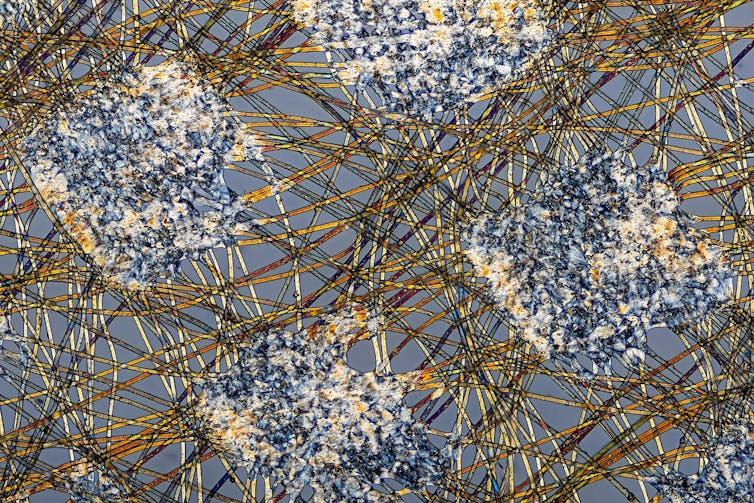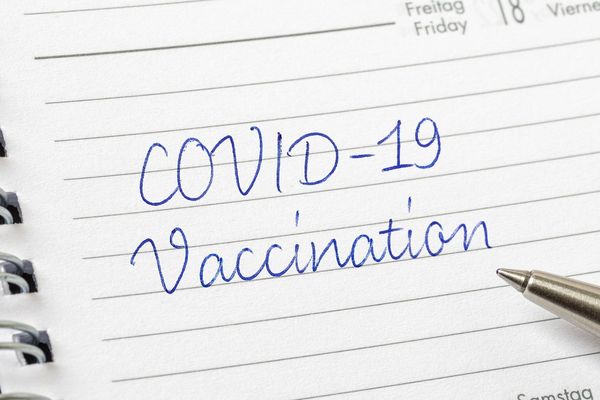By Christian L'Orange, Colorado State University
The Centers for Disease Control and Prevention has changed its guidelines about masks and respirators a number of times over the past two years and gave its most recent update on Jan. 14, 2022. The update states that cloth face coverings offer the least protection from the coronavirus compared with surgical masks or N95-style masks. Christian L'Orange is a mechanical engineer who has been testing the performance of masks for the state of Colorado since the beginning of the pandemic. He explains the new CDC guidelines and the science of what makes for a good mask.
1. What changed in the CDC guidelines?
The CDC currently recommends that you “wear the most protective mask you can that fits well and that you will wear consistently.” The question, then, is what type of mask offers the best protection for you – by filtering the air you breathe in – and for those around you – by filtering the air you breathe out?
The CDC’s updated guidelines clearly lay out the hierarchy of protection: “Loosely woven cloth products provide the least protection, layered finely woven products offer more protection, well-fitting disposable surgical masks and KN95s offer even more protection, and well-fitting NIOSH-approved respirators (including N95s) offer the highest level of protection.”
From a performance standpoint, the N95 and KN95 masks are the best option. While supply chain limitations led to the CDC recommending people not wear N95s early in the pandemic, today they are easily obtainable and should be your first choice if you want the most protection.
The biggest change in the new guidelines has to do with cloth masks. Previous guidance from the CDC had said that some cloth masks could offer acceptable levels of protection. The new guidance still acknowledges that cloth masks can offer a small amount of protection but places them at the very bottom of the bunch.
N95 masks are made from a tangled web of tiny plastic fibers that are very effective at trapping particles.
Alexander Klepnev via Wikimedia Commons, CC BY-SA
2. What’s the difference between N95, surgical and cloth mask materials?
The effectiveness of a mask – how much protection a mask provides the wearer – is a combination of two major elements. First, there’s the ability of the material to capture particles. The second factor is the fraction of inhaled or exhaled air leaking out from around the mask – essentially, how well a mask fits.
Most mask materials can be thought of as a tangled net of small fibers. Particles passing through a mask are stopped when they physically touch one of those fibers. N95s, KN95s and surgical masks are purpose-built to be effective at removing particles from air. Their fibers are typically made from melt-blown plastics, often polypropylene, and the strands are tiny – often less than four thousandths of an inch (10 micrometers) in diameter – or approximately one third the width of a human hair. These small fibers create a large amount of surface area within the mask for filtering and collecting particles. Although the specific construction and thickness of the materials used in N95, KN95 and surgical masks can vary, the filter media used are often quite similar.
These fibers are very tightly packed together so the gaps a particle must navigate through are very small. This results in a high probability that particles will end up touching and sticking to a fiber as they pass through a mask. These polypropylene materials also often have a static charge that can help attract and catch particles.
Cloth masks are typically made of common woven materials such as cotton or polyester. The fibers are often large and less densely packed together, meaning particles can easily pass through the material. Adding more layers can help, but stacking layers has a diminishing return and the performance of a cloth mask, even with multiple layers, will still typically not match that of surgical mask or N95.
3. How much does fit matter for masks?

iStock.com/jirkaejc
Fit is the other major component in how effective a mask is. Even if the materials used in a mask were perfect and it removed all particles from the air that passed through it, a mask can offer protection only if it doesn’t leak.
When you breathe in and out, air will always take the path of least resistance. If there are any gaps between a mask and someone’s face, a substantial fraction of every breath will seep out through those gaps and the mask will provide relatively little protection.
Many cloth mask designs simply do not seal well. They are not stiff enough to push against the face, there are gaps where the mask doesn’t even come in contact with the face and it is not possible to cinch them tightly enough against the skin to form a decent seal.
But leaking is a concern for all masks. Although the materials used in surgical masks are quite effective, they often bunch and fold on the sides. These gaps provide an easy route for air and particles to leak out. Knotting and tucking surgical masks or wearing a cloth mask over a surgical mask can both significantly reduce leakage.
N95 masks aren’t immune to this problem either; if the nose clip isn’t securely pushed against your face, the mask is leaking. What makes N95s unique is that a specific requirement of the N95 certification process is making sure the masks can form a good seal.
4. What is different about omicron?
The mechanics of how masks function is likely no different for omicron than any other variant. The difference is that the omicron variant is more easily transmitted than previous variants. This high level of infectiousness makes wearing good-quality masks and wearing them correctly to limit the chances of catching or spreading the coronavirus that much more critical.
[Over 140,000 readers rely on The Conversation’s newsletters to understand the world.Sign up today.]
Unfortunately, the attributes that make for a good mask are the very things that make masks uncomfortable and not very stylish. If your cloth mask is comfy and light and feels like you are wearing nothing at all, it probably isn’t doing much to keep you and others safe from the coronavirus. The protection offered by a high-quality, well-fitting N95 or KN95 is the best. Surgical masks can be very effective at filtering out particles, but getting them to fit correctly can be tricky and makes the overall protection they will provide you questionable. If you have other options, cloth masks should be a last choice.![]()
Christian L'Orange, Assistant Research Professor of Mechanical Engineering, Colorado State University
This article is republished from The Conversation under a Creative Commons license. Read the original article.








